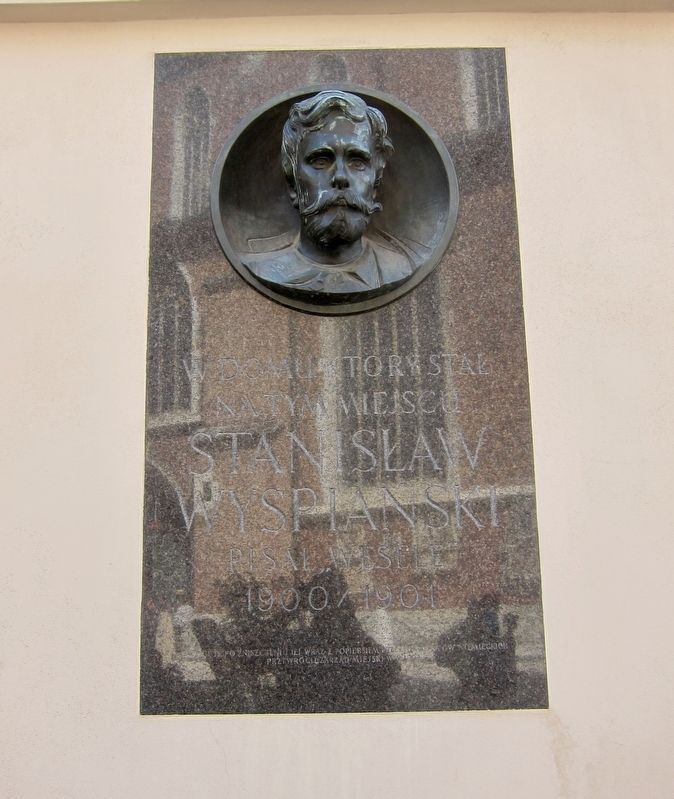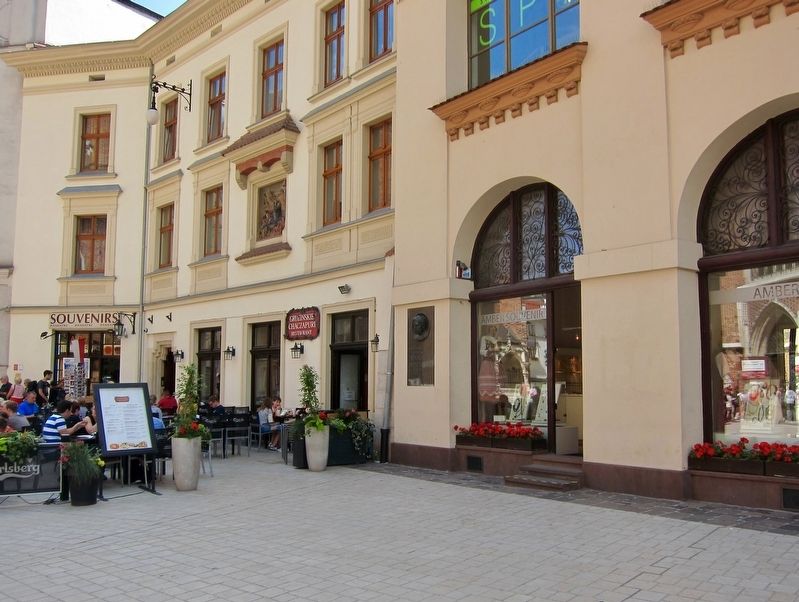Stanisław Wyspiański
na tym miejscu
Stanisław
Wyspiański
pisał „Wesele"
1900/1901
During 1900-1901, in a house that stood at this site, Stanisław Wyspiański wrote the play, "The Wedding".
Erected 1947.
Topics. This historical marker is listed in this topic list: Arts, Letters, Music.
Location. 50° 3.679′ N, 19° 56.351′ E. Marker is in Kraków, Małopolska (Lesser Poland), in Kraków Powiat. Marker is on plac Mariacki just east of Rynek Główny, on the right when traveling east. Touch for map. Marker is at or near this postal address: plac Mariacki 8, Kraków, Małopolska 31-042, Poland. Touch for directions.
Other nearby markers. At least 8 other markers are within walking distance of this marker. Andrzej Badurski (within shouting distance of this marker); Prałatówka Kościoła Mariackiego (about 90 meters away, measured in a direct line); Merkuriusz Polski / The Polish Mercury (about 90 meters away); Kamienica Strzemboszowska / The Strzemboszowska House
Also see . . . The Wedding (1901 play) (Wikipedia). "The Wedding (Polish: Wesele) is a defining work of Polish drama written at the turn of the 20th century by Stanisław Wyspiański. It describes the perils of the national drive toward self-determination following the two unsuccessful uprisings against the Partitions of Poland, in November 1830 and January 1863. The plot is set at the wedding of a member of Kraków intelligentsia (the Bridegroom), and his peasant Bride. Their class-blurring union follows a fashionable trend among friends of the playwright from the modernist Young Poland movement....shown multiple times on stage, this drama has had much influence on the Polish culture. It was made into a movie with the same title by the award-winning Polish film director, Andrzej Wajda, in 1972." (Submitted on June 20, 2018.)
Credits. This page was last revised on June 20, 2018. It was originally submitted on June 19, 2018, by Andrew Ruppenstein of Lamorinda, California. This page has been viewed 181 times since then and 7 times this year. Photos: 1. submitted on June 19, 2018, by Andrew Ruppenstein of Lamorinda, California. 2. submitted on June 20, 2018, by Andrew Ruppenstein of Lamorinda, California.

